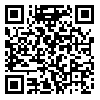Volume 11, Issue 2 (Occupational Medicine Quarterly Journal 2019)
tkj 2019, 11(2): 26-33 |
Back to browse issues page
Ethics code: این مطالعه در سال 1394 انجام شده است.
Download citation:
BibTeX | RIS | EndNote | Medlars | ProCite | Reference Manager | RefWorks
Send citation to:



BibTeX | RIS | EndNote | Medlars | ProCite | Reference Manager | RefWorks
Send citation to:
asgari M, halvani G, zarinkafsh M. Study of work postures and ergonomic interventions at the Pvc Pipe Fittings Manufacturing Company. tkj 2019; 11 (2) :26-33
URL: http://tkj.ssu.ac.ir/article-1-968-en.html
URL: http://tkj.ssu.ac.ir/article-1-968-en.html
, mahsa.asgari7274@gmail.com
Abstract: (3603 Views)
Introduction: Musculoskeletal disorders are prevalent in work environments. Performing programs to identify and control the risk factors for musculoskeletal disorders and to carry out corrective actions to improve working conditions is important because of the impact on the health of the workforce.Methods: In this study, the presence of various shifts in the operating rooms and the training and justification of the employees of this department regarding its study and its objectives, the steps of the work of the operating room staff in various occupations were observed and existing documents and guidelines were reviewed. The main steps, including hierarchical analyzes of businesses, identifying errors in terms of each task and sub task, completing other parts of the work sheet, and determining the probability of human error and providing the prioritized control strategies in the next steps, was carried out.
Results: Based on the results of Nordic questionnaire, age, work experience and higher weight were associated with musculoskeletal pain in most of the organs. Also taller was associated with back and waist pain and older age with pain and discomfort in the palms, knees and ankles (p <0.05). Based on the results of posture assessment, RULA 2 has a risk level of 4, 2 tasks Risk level 3 and 2 were risk level 2, which after the implementation of the interventions, a number of risk levels were eliminated in general and a number decreased.
Conclusion: Despite the high risk of musculoskeletal disorders in this industry, ergonomic interventions reduced risk to the desired level.
Results: Based on the results of Nordic questionnaire, age, work experience and higher weight were associated with musculoskeletal pain in most of the organs. Also taller was associated with back and waist pain and older age with pain and discomfort in the palms, knees and ankles (p <0.05). Based on the results of posture assessment, RULA 2 has a risk level of 4, 2 tasks Risk level 3 and 2 were risk level 2, which after the implementation of the interventions, a number of risk levels were eliminated in general and a number decreased.
Conclusion: Despite the high risk of musculoskeletal disorders in this industry, ergonomic interventions reduced risk to the desired level.
Type of Study: Applicable |
Subject:
Ergonomics
Received: 2018/09/11 | Accepted: 2019/07/7 | Published: 2019/11/1
Received: 2018/09/11 | Accepted: 2019/07/7 | Published: 2019/11/1
Send email to the article author
| Rights and permissions | |
 |
This work is licensed under a Creative Commons Attribution-NonCommercial 4.0 International License. |







